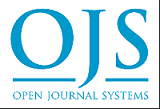Factors associated with exclusive breastfeeding among primiparous women in East Lampung, Indonesia
DOI:
https://doi.org/10.33024/minh.v7i4.278Keywords:
Exclusive Breastfeeding, Knowledge, Primiparous MotherAbstract
Background: Breast milk is the primary source of energy and essential nutrients for infants. However, based on the data obtained from Pasir Sakti community health center, there has been a decline in the coverage of exclusive breastfeeding (EBF). In 2019, it was 48.6%, in 2020, it was 43.9%, and in 2021, it experienced a further decrease to 39.6%. The low rate of EBF is attributed to several factors, such as socio-cultural conditions, family support, especially from husbands, a lack of understanding and awareness of the importance of EBF among primiparous mothers.
Purpose: To determine the factors associated with exclusive breastfeeding among primiparous women in East Lampung, Indonesia.
Method: Quantitative research using a retrospective approach was conducted on all primiparous mothers with infants aged ≥6 months in the working area of Pasir Sakti community health center, East Lampung, on June 20-29, 2023, involving a total of 95 respondents. The inclusion criteria were mothers with infants aged ≥6 months, who had already introduced complementary foods before the age of <6 months, and were willing to participate as respondents. Exclusion criteria included infants with congenital abnormalities such as cleft lip and palate, mothers with breast abnormalities, breast cancer, mastitis, AIDS (HIV), hepatitis B, and those undergoing hormone therapy. Data analysis techniques included univariate and bivariate analysis.
Results: Based on the acquired knowledge, the p-value obtained is 0.001, while the odds ratio (OR) is 4.3 with a 95% confidence interval interpretation ranging from 2.357 to 8.025, with a difference of 1.684. For the attitude variable, a p-value of 0.001 was obtained with an OR of 10.8 and a 95% confidence interval interpretation ranging from 5.359 to 22.049, with a difference of 5.668. Regarding the cultural variable, the p-value is 0.001 with an OR of 4.9 and a confidence interval between 2.653 and 9.337, with a difference of 2.036. For the healthcare provider's role variable, the p-value is 0.001 with an OR of 3.4. The 95% confidence interval interpretation is between 1.856 and 6.335, with a difference of 1.333. Lastly, for the husband's support variable, the p-value is 0.001 with an OR of 3.9. The 95% confidence interval interpretation is between 2.085 and 7.352, with a difference of 1.607.
Conclusion: The dominant factor related to EBF in primiparous mothers is attitude with p-value = 0.001, and OR = 10.870.
Downloads
Published
How to Cite
Issue
Section
License
Copyright (c) 2024 Malahayati International Journal of Nursing and Health Science

This work is licensed under a Creative Commons Attribution-ShareAlike 4.0 International License.









